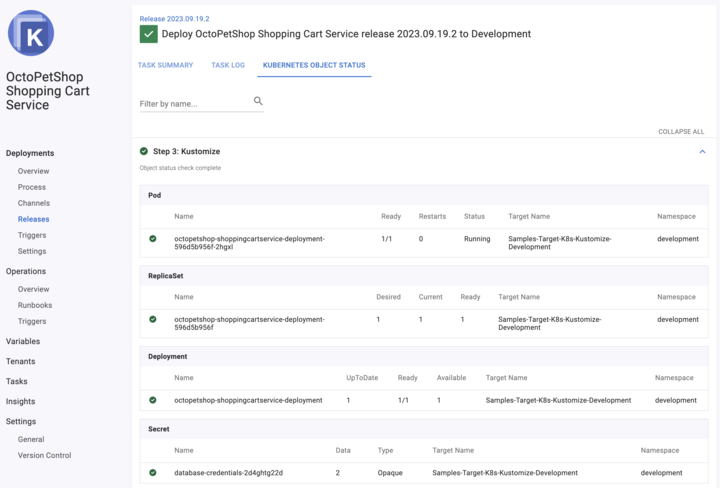Octopus Deploy Streamlines Application Deployment on Kubernetes Clusters
Octopus Deploy today updated its continuous delivery (CD) platform to enable DevOps teams to work more easily with tools such as Kustomize and Helm or plain YAML files when deploying cloud-native applications on Kubernetes clusters.
In addition, a Kubernetes Object Status feature now provides live updates during the deployment while an Advanced Container Image References tool monitors the feed and substitutes package version variables to eliminate the need to update configuration files every time there is a release of a new container image.
Finally, Octopus Deploy has added an ability to source configurations from Git in addition to the repository it provides. The goal is to make it simpler for IT teams to embrace GitOps as a repository for providing access to infrastructure-as-code (IaC) templates alongside the software that will run on a platform.
Many organizations are embracing GitOps to more loosely couple continuous integration (CI) and CD platforms. Integrated CI/CD platforms have been around now for more than a decade, but few organizations have been able to truly automate the delivery of applications using those platforms. Platforms such as Octopus Deploy have been created from the ground up to specifically manage deployments of applications.
It’s not clear how many DevOps teams are willing to acquire a separate CD platform, but as applications become more challenging to build and deploy in the cloud-native era, many organizations are revisiting the DevOps processes they used to build and deploy monolithic applications. The challenge is many of them have spent years defining workflows based on legacy CI/CD platforms, so there is a lot of existing inertia that would need to be overcome when adopting a dedicated CD platform.
Each DevOps team will need to decide how many staff they want to dedicate specifically to managing those CD platforms, but it’s clear the pace at which applications are being built and deployed is accelerating.
Colin Bowern, senior vice president for product at Octopus Deploy, said the goal is to make it easier to deploy cloud-native applications in a Kubernetes environment using a set of best practices based on environmental progression techniques for modeling an IT environment. In addition to creating a set of templates for rolling out applications faster, that approach also ensures smooth transitions between stages of deployment that can be audited more easily as new pipelines are created, he added.
Octopus Deploy is primarily focused on cloud-native applications, but the platform can be applied to monolithic applications, especially when cloud-native applications are being deployed alongside legacy applications, noted Bowren. As more organizations embrace platform engineering as a methodology for managing DevOps at scale, many of them will inevitably reassess how the entire software development life cycle is currently managed.
Regardless of the approach to CD, the one thing that is certain is with the rise of generative artificial intelligence (AI), there is more code being written than ever. As a result, the pace at which applications are being built and deployed should accelerate to the point where existing DevOps workflows are likely to become even more strained than they already are.



